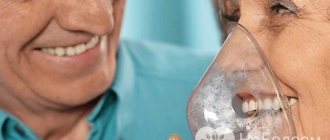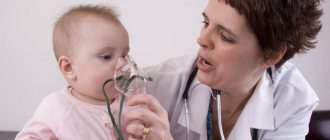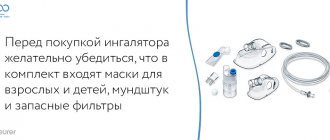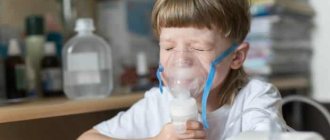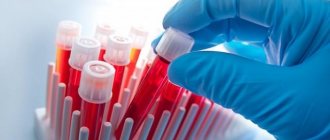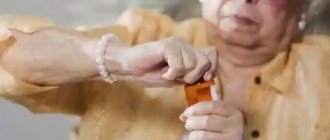A person can get sick at any time of the year. There are many reasons for this: weak immunity, sudden changes in temperature, a banal draft and much more. Modern parents do not want to give their child strong medications once again, because any drug has many side effects, and adults often suffer from allergies to pills. Regular saline solution can help both. It helps eliminate rhinitis, laryngitis, pharyngitis, bronchitis, pneumonia and many other respiratory diseases.
If you didn’t know, saline solution can be prepared even at home. To do this, you need to take 1 liter of boiled water and 10 grams of salt. Mix the salt thoroughly and the solution is ready. It should be stored in the refrigerator for no more than a day. Otherwise, instead of having a therapeutic effect, it will have the opposite. Before using the solution, it must be heated. But you should be careful, because the mucous membrane of the nasopharynx is very delicate and can easily be burned.
Inhalation of saline solution for cough
Why is saline solution the best of all medicines? Everything is very simple. Small children do not know how to swallow pills, and pharmaceuticals have many side effects; drops almost immediately enter the esophagus; ointments linger on the mucous membrane, but practically do not reach the respiratory tract; The effect of aerosols is short-term.
What are the advantages of saline solution? The use of this product does not cause allergies or other side effects, and has a moisturizing effect on the nasopharyngeal mucosa. In addition, salt is a good antiseptic. When it comes into contact with the mucous membrane, it kills pathogenic bacteria. Salt also softens coughs and helps remove phlegm from the lungs.
When to use
Sodium chloride solution has been successfully used:
- at the time of surgery and after surgery to maintain plasma volume;
- when the body is dehydrated, which is caused by various diseases;
- for severe bleeding, severe burns and dispensation to maintain plasma volume;
- to reduce intoxication when a dangerous infection enters the body;
- for washing eyes during inflammatory and infectious processes, allergies and injuries;
- for rinsing the nose during colds;
- for inhalation for respiratory diseases;
- for dissolving different drugs when used together for injection.
How to do inhalation with saline solution?
To carry out medical procedures, it is still better to take saline solution at the pharmacy, because it is sold there in sterile form.
To eliminate a cough, you need to pour saline solution into the inhaler and deeply inhale its vapors. For severe coughs, medications can be added to the medicinal fluid.
For dry cough, the drugs “Berodual” or “Pulmicort” are prescribed. When it is wet, it is better to use Lazolvan, ACC, and Fluimucil. You can also add antibiotics to the saline solution: “Bioparox”, “Fluimucil”, etc.
We must remember the importance of temperature. For children under 3 years old, the saline solution should be no warmer than 30 degrees, for children under 5 years old – 40 degrees. From 6 years of age, you can use a medicinal liquid at a temperature of 52 degrees, and for adults - at 54 degrees.
For children under three years of age, inhalations can be done once a day, from 3 years of age and for adults - three times a day. The course of treatment will depend on the type of cough and the presence of complications, as well as on age.
Saline solution for inhalation for respiratory diseases
Most people associate a drug such as saline solution exclusively with a dropper or intramuscular injection. This is not surprising, since most often many encounter it after surgery or during illness. But the benefits and scope of use of saline solution are not limited to this.
First, it’s worth understanding what saline solution is and why it’s even called that. Saline solution is nothing more than a solution of ordinary table salt. The pharmacy most often sells exactly a 0.9 percent solution of sodium chloride (the same salt). This raises the question: since this is simple salt, which every person has at home, does that mean you can prepare a saline solution yourself? Of course, you can: to do this, ten grams of salt should be diluted in one liter of boiled water, brought to a boil and cooled. But the solution obtained in this way can be stored in the refrigerator for no more than a day - after all, it was not prepared under sterile conditions. And the output volume is quite large, which is not always necessary. Therefore, it is easier and safer to purchase such a solution at the pharmacy - especially since it costs pennies. Saline solution is produced both in ampoules (five, ten, twenty milliliters) and in bottles (one hundred, two hundred, four hundred and thousand milliliters).
This solution is called physiological because its composition, that is, the concentration of table salt in it, almost corresponds to its concentration in human blood plasma. Thus, this solution is physiological, that is, natural for the human body. It is for this reason that it is administered after operations, and many medications are also diluted with it.
But saline solution also has a very useful function, which will be discussed further.
It is used for inhalation in the fight against respiratory diseases. For such inhalations to be effective, you need to purchase a nebulizer - a special device with which the solution is sprayed into smaller particles and allows them to penetrate deeper into the respiratory tract (which allows you to achieve quick results).
It is also worth noting that conventional steam procedures and the use of saline solution do not make any sense: when the solution boils, water vapor is formed, and the beneficial salt turns into sediment.
The benefit of saline solution during inhalation is due, firstly, to its ability to moisturize - which facilitates the passage of sputum when coughing. Secondly, the salt included in its composition is capable of destroying pathogenic bacteria and is a natural antiseptic. In addition, saline solution is not capable of causing allergies, so it is especially often used for inhalation in children.
You can also add other medications to the saline solution to enhance the effect of treatment, but only as prescribed by your doctor! Even seemingly harmless essential oils should be treated with caution, as when sprayed into the respiratory tract they form an oily film that prevents the discharge of mucus and subsequent recovery.
The inhalation procedure itself requires about three to four milliliters of saline solution (plus medicine, if prescribed by the doctor). The solution is poured into a special nebulizer container according to the instructions for using the device. Inhalation involves inhaling steam through a nebulizer tube. The duration of the procedure depends on age: for children 1-2 minutes no more than twice a day, for adults - 4-5 minutes three times a day.
The duration of the general course of treatment with such inhalations is determined depending on the improvement of the condition. But since this procedure certainly cannot cause harm (if the recommendations described above are followed), inhalation with saline solution can be continued until the desired result is achieved.
Author of the article: practicing physician Natalya Eduardovna Starshinina.
What is a nebulizer?
A nebulizer is a special device in which medicinal liquids are converted into drops. The latter, when they get on the mucous membrane of the nasopharynx or lungs, penetrate inside and have a very good therapeutic effect.
What differences does this saline inhalation have? The nebulizer can be used by both the smallest children and the elderly. The thing is that when using this device you do not need to take a strong breath or adapt to its operation. Inhale when it is convenient for you. The medicine does not evaporate anywhere, but is located in a special tank.
The saline solution breaks down into small particles using a special compressor built into the device and powered by the network.
How to properly carry out inhalation for children with a nebulizer?
- Before starting inhalation for your child, be sure to read the instructions for use of your specific device; there may be important nuances there.
- Remember that only a doctor can prescribe a competent treatment regimen, specific medicine and dosage.
- For inhalation, use only medications intended for this purpose, do not use boiled or distilled water - this will not only not be effective, but can also become dangerous and lead to bronchospasm. As for the use of mineral water without gas for inhalation, it can be used, but only as prescribed by a doctor, for example, when a child has a small amount of viscous sputum in the respiratory tract (cough with difficult-to-clear sputum). At the same time, the use of mineral water can cause irritation of the back wall of the pharynx, as well as provoke the bronchospasm already mentioned above. Also, do not use essential oils, infusions or herbal decoctions.
- A common question is whether it is possible to perform inhalations when a child has a fever. Depends on the temperature, but more likely no than yes. Doctors do not recommend inhalation for a child at a temperature above 37.5 degrees.
- Do not inhale immediately after meals or after active games or any other physical activity.
- Medicine that is stored in the refrigerator should be taken out and allowed to warm up slightly before use.
- If there are any elements on the child’s clothes that prevent him from breathing freely, remove them. Breathing should be free.
- After inhalation is completed, clean the device, all parts and dry them.
Questions about what inhalations to give to a child, inhalation recipes, how many minutes to do inhalations, how many days or how many times a day - all this is a treatment plan that the pediatrician will prescribe. Only a specialist, after examining the child and deciphering the tests, can give you answers to these questions. Self-medication can be ineffective and even dangerous.
Inhalations for coughing in children - features.
It is important to understand what kind of cough a child has - wet or dry; this will determine which medicine to choose for inhalation. When fighting a cough, inhalation is carried out as follows: inhale through the mouth, exhale through the nose.
Inhalations for a dry cough in a child are primarily aimed at moisturizing the mucous membranes and making the sputum more liquid. For this, doctors prescribe mucolytics, bronchodilators and/or anti-inflammatory drugs. At the initial stage of the disease, inhalation with saline solution may be sufficient (to the question of whether it is possible to inhale children with saline solution - the answer is “yes”, but only as prescribed).
For wet coughs, inhalations have a different purpose: to have an expectorant, disinfectant and antiseptic effect. This way, phlegm will be cleared from the lungs faster.
Inhalations for a runny nose in children - features.
For a runny nose or diseases of the nasal cavity, inhalations are carried out as follows: inhalation and exhalation are carried out strictly through the nose. For treatment, drugs such as sinupret, chlorophyllipt, miramistin, rotokan, rinofluimucil and others can be used (the specific drug and dosage are prescribed by the doctor, depending on the severity of the disease; the names of the drugs are given as an example and do not constitute a recommendation for treatment).
In what cases should inhalation not be performed with a runny nose:
- the child’s ears hurt, there is a suspicion of otitis media;
- mucus from the nose has a greenish or yellowish tint, this may indicate the development of a bacterial infection, and in this case, inhalation can cause complications;
- the child is predisposed to nosebleeds or pulmonary bleeding.
Basic rules for inhalation with a nebulizer
Wash your hands thoroughly.
2. Assemble the nebulizer.
3. Prepare the medicinal substance and heat it to the required temperature.
4. Pour the solution into the nebulizer cup.
5. Close the device tightly and attach a face mask, mouthpiece, or nasal cannula.
6. Connect the nebulizer to the compressor.
7. Turn on the compressor and begin to inhale the medicine.
8. After completing the procedure, turn off the compressor and disconnect the device.
9. Wash all parts of the nebulizer with a 15% soda solution.
10. Boil everything for 10 minutes.
11. Dry the components of the device and store them in a clean cloth.
Indications for use
The main indication for the procedure is dry cough in adults and children. Thick, viscous mucus is difficult to cough up from the bronchial tree and causes spasm of the smooth muscles of the lower respiratory tract. Patients develop asthma attacks.
Inhalations are aimed at liquefying dry mucus. Saturation with saline vapor makes sputum liquid, increases its volume in the bronchi, which facilitates the rapid evacuation of pathological mucus. The procedure helps to cope with cough and quickly restores the patency of the respiratory tract.
Saline solution is safe and effective for many diseases of the respiratory system that are complicated by obstruction (blockage, obstruction):
- nasal congestion, rhinitis, sinusitis;
- pharyngitis, laryngitis with increased exudation and severe pain caused by coughing;
- tracheitis, acute and chronic bronchitis;
- bronchial asthma during remission;
- fungal infection of the respiratory tract;
- cystic fibrosis is a hereditary disease with severe damage to the respiratory organs and exocrine glands;
- chronic obstructive diseases.
Doctors prescribe inhalation of saline solution after the acute inflammation subsides, during the recovery period. The procedure prevents the development of residual effects and complications of respiratory tract infections.
Carrying out the procedure for a runny nose
Inhalation with saline solution can be performed even on newborn children. Once on the nasal mucosa, the medicinal liquid softens it and promotes the removal of mucus. If you have a runny nose, the procedure should be done every 4 hours. Treatment should be started at the first manifestations of the disease; if the disease has been going on for several days, saline solution will not help. The use of medications will be required.
You can add various essential oils, for example, pine needles, eucalyptus, to inhalation with saline solution. Aloe or Kalanchoe juice is also used. But all these means must be used with caution. Very often they cause allergies.
Sodium chloride - what is it?
Therapeutic saline solution is considered an excellent conductor of electricity. Thanks to it, the water-electrolyte and alkaline balance is maintained.
The preparation of saline solution is quite simple - add table salt little by little to distilled water until the required concentration is obtained. The main thing is to introduce the salt in portions so that it completely dissolves, so that a precipitate does not form.
In some cases, the body may not have enough sodium chloride. Its deficiency can be caused by:
- frequent vomiting;
- severe burn;
- large loss of fluid;
- gastrointestinal tract infection;
- cholera;
- hyponatremia.
How to prepare the solution yourself
If it is not possible to purchase a ready-made drug, prepare the solution yourself.
Recipe for preparing saline solution in accordance with WHO recommendations:
- boil 1 liter of water and let cool to 60°C;
- add 1 tsp. table or sea salt;
- stir until the crystals are completely dissolved;
- strain through cheesecloth.
To use the resulting medicine, the solution temperature must be at least 37°C.
Complications
Due to impaired nasal breathing, patients have to breathe through their mouth. The quality of life decreases, sleep and appetite are disturbed, and the sense of smell is lost. Headaches and other symptoms characteristic of vegetative-vascular dystonia appear, as well as irritability, fluctuations in blood pressure, etc. In children, such a neglected condition rarely leads to developmental delays.
Attention!
An advanced runny nose often leads to deep necrosis, when surgical intervention becomes the only way to help the patient. Atrophic runny nose is the cause of persistent chronic rhinitis.
Inhalations for children
Preschool children cannot prescribe the procedure on their own. In pediatrics, it is necessary to strictly calculate the dosage of the drug, taking into account how old the child is and what his body weight is.
Children often suffer from colds and tonsillitis, so steam inhalers are used in treatment. The manipulation is carried out in a sitting position, for infants - lying down. It is advisable to use a mask to administer the medicine.
Restless children are held in the arms of adults (parents, medical workers). If the child cries, is afraid, screams, in this case it will not be possible to carry out effective manipulation; it is better to postpone it until the baby calms down.
A course of steam treatments helps to cope with sore throat, sore throat, laryngitis, and bronchitis. Prevents the development of false croup at night.
Depending on the indications, children receive from 1 to 3 inhalations daily, lasting from 1 to 12-15 minutes. At the end of the session, the child should remain in bed for half an hour. For infants in the first year of life, a steam procedure is prescribed only in a hospital setting, under the supervision of the attending physician.
Remember! When using drugs in children, saline solution or any other, take into account the physiological characteristics of the respiratory tract mucosa. Once on the epithelium of the nose, mouth, and throat, the active substance is absorbed into the systemic bloodstream and can negatively affect the functioning of internal organs and systems.
Children often develop local and general side effects:
- irritation of the mucous membranes of the nose, pharynx, larynx;
- conjunctivitis if the rules of the procedure are violated (saline vapor gets into the eyes);
- rapid heartbeat, shortness of breath;
- nausea, single vomiting;
- spitting up in babies.
Important! If after inhalation the child’s general condition worsens, symptoms such as dizziness, headaches, skeletal muscle cramps, loss of coordination, interruptions in breathing, severe weakness, loss of consciousness progress, and urgent hospitalization is required.
What is a nebulizer used for?
Enlarge
A nebulizer is a modern inhaler that allows you to obtain a very fine aerosol with a drug. Everyone knows, for example, a “homemade” inhaler - boiled potatoes in a pan covered with a towel.
So, when inhaling the steam formed over potatoes, it only affects the upper parts of the respiratory tract, because the droplets are quite large in size and settle quickly. When using a nebulizer, the aerosol droplets are so small that they penetrate into the lowest parts of the lungs and there they exert their therapeutic effect.
Therefore, the main purpose of using nebulizers is to treat respiratory diseases throughout. Such diseases include bronchitis, tracheitis, laryngitis, pneumonia, sinusitis, and influenza.
Symptoms of dry runny nose
The disease has several stages. The main risk group includes people employed in hazardous industries.
In the initial period:
- the patient is thirsty all the time;
- after drinking liquid, the feeling of nasal dryness only increases;
- dry throat, stuffy nose, difficulty breathing;
- headache, body aches;
- Body temperature may rise.
Along with these signs, frequent sneezing and general malaise appear, that is, symptoms characteristic of ordinary rhinitis. However, there is a distinctive feature - with a burning sensation in the nasopharynx, severe congestion and excessive and painful dryness of the nose are felt.
The next stage, which occurs in the absence of adequate treatment, is the transition of the disease to a chronic form.
Don't risk your health! At the first signs of the disease, high-quality modern medications should be used to treat dry rhinitis. A good therapeutic and prophylactic remedy are drugs that moisturize the nasal passages.
What drugs is sodium chloride mixed with?
Saline solution is a universal remedy. In terms of its composition and pH level, it is compatible with the internal environments of the body. Therefore, it is often used to dilute pharmacological drugs, even in cases where, according to the instructions, only water is suitable for dilution.
List of drugs with which saline solution is mixed:
- Berodual ─ bronchodilator for relieving asthma attacks;
- Dexamethasone ─ a hormone for the treatment of bronchial asthma
- Dioxidin, Gentamicin ─ broad-spectrum antibiotics;
- Fluimucil, Ambrobene, Lazolvan ─ mucolytic (expectorant) agents;
- Dekasan ─ antiseptic;
- Atrovent ─ relieves bronchospasm;
- Sinupret ─ homeopathic remedy for colds and coughs;
- Malavit is a drug based on natural ingredients with antiseptic properties;
- Naphthyzin is a vasoconstrictor for the common cold.

